You’re on the hunt for the perfect boat engine, but you also care about the environment. That’s why you’re looking into low-emission engines. Alleviate your concerns with the help of this informative guide, “Buyer’s Guide To Low-emission Boat Engines.” It’s not just about power and performance anymore; it’s about making responsible choices that won’t cause too much damage to the world’s water bodies. This comprehensive guide will enable you to make a difference with your purchase. This is your opportunity to contribute towards safeguarding the environment while enjoying boating the way it’s supposed to be.
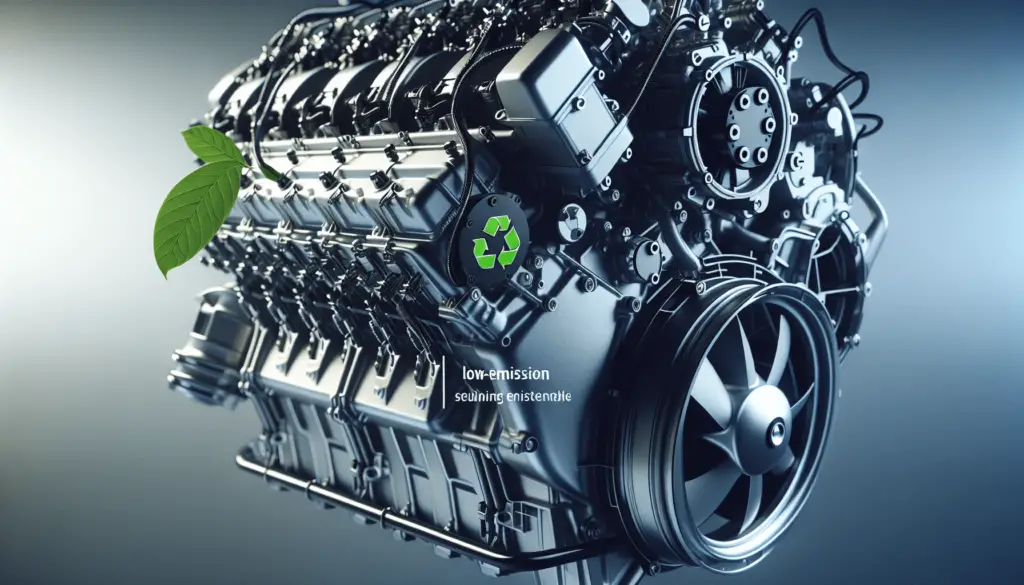
Understanding Emission Standards
You, as a boat enthusiast, must pay careful attention to emission standards. These are the rules set by various authorities, including the Environmental Protection Agency (EPA), to regulate the amount of pollutants that boat engines can emit into the environment. These standards encompass not just exhaust emissions, but also engine noise and fuel spillage.
Understanding the Emissions Standards set by the Environmental Protection Agency (EPA)
The EPA puts measures in place to control and reduce the environmental impact of boat engines. The agency has specific standards for carbon monoxide (CO), hydrocarbon (HC), and nitrogen oxide (NOx) emissions. Adherence to these emission regulations is crucial, as it helps promote cleaner maritime transportation and reduces harmful pollutants’ environmental impact.
The specifics of the regulations on engine noise and fuel spillage
Beyond harmful emission gases, the EPA also focuses on minimizing engine noise and fuel spillage. Loud boat engines can disturb wildlife and lead to noise pollution, while fuel spillage can cause water pollution, affecting marine life negatively. As an environmentally conscious boat owner, it’s essential to ensure your boat engine meets these emission, noise, and spillage standards.
How emission standards vary around the world and their implications
Different countries around the globe tend to have varying emission standards. For instance, Europe’s emissions standards often differ from those in the USA. These variations might affect your importing or exporting decisions, particularly if you choose to purchase a boat engine from a different region. Therefore, understanding these differences is vital in becoming a responsible, global boat owner.
Types of Low-Emission Boat Engines
Being a responsible boat owner means looking beyond traditional fuel-combustion engines and understanding alternatives present in the market. When we talk about low-emission boat engines, options include two-stroke and four-stroke engines, hybrid and electric engines, and engines that use alternative fuels like bio-diesel and natural gas.
Overview of Two-Stroke and Four-Stroke Engines
Two-stroke engines are known for their lightweight and high power-to-weight ratio, making them a popular choice for fast and sleek boats. On the contrary, four-stroke engines might come off as heavier, but they are well-acknowledged for their low noise, fuel efficiency, and low emissions.
Hybrid and Electric Engines
Hybrid and electric engines are cutting-edge solutions for reducing emissions in the boating industry. Hybrid engines combine a conventional engine (usually diesel) with an electric motor. In contrast, electric engines run purely on electricity stored in batteries. While both types present their own sets of advantages, the key highlight remains their ability to significantly reduce harmful emissions.
Alternative Fuels: Bio-Diesel and Natural Gas Engines
Boat engines can also turn towards alternative fuels, such as bio-diesel and natural gas. These fuels emit lesser harmful pollutants when burned, hence, contributing towards reduced environmental footprints from boating.
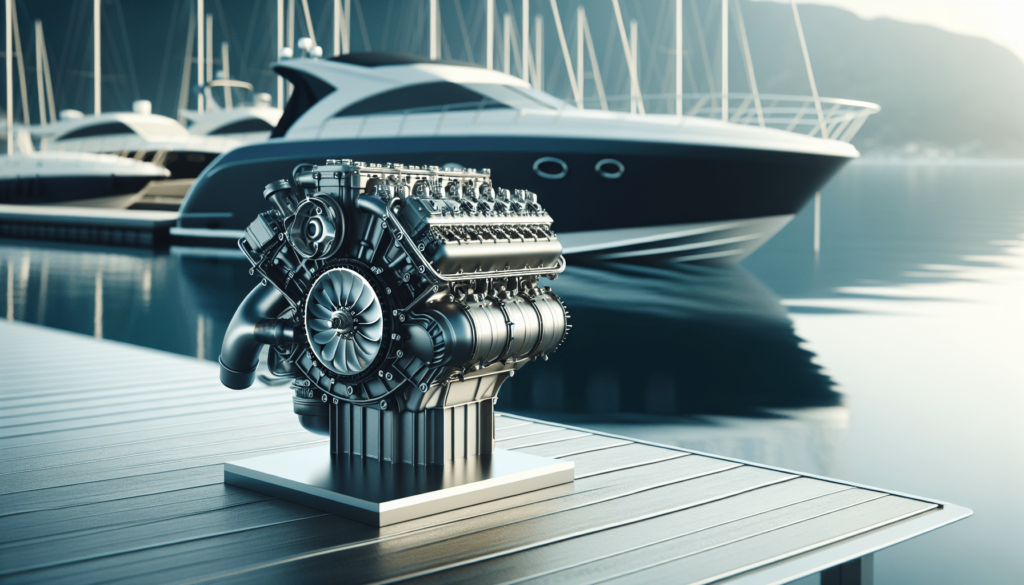
Factors to Consider When Buying Low-Emission Boat Engine
Any responsible boat owner needs to consider several things before buying a low-emission boat engine. This list includes fuel efficiency, engine power, cost of ownership, operational and maintenance demands, and of course, brand reputation and reliability.
Fuel Efficiency
Fuel efficiency is an essential factor to consider simply because it directly affects both your wallet and the environment. The higher the fuel efficiency of an engine, the less fuel it consumes, resulting in lower costs and reduced emissions.
Engine Power
Power is another primary consideration when choosing a low-emission boat engine. While you might be trying to go green, you surely wouldn’t want an engine that doesn’t provide the necessary speed or performance.
Cost of Ownership
A low-emission boat engine’s cost is more than just its initial price. You should consider the associated ownership costs, which include fuel, maintenance, repairs, and sometimes, even the cost of special fuels or charging infrastructure for alternative engines.
Operation and Maintenance
The functioning and maintenance requirements also command careful consideration. Low-emission engines might sometimes necessitate meticulous maintenance or specialized knowledge. Furthermore, hybrid and electric engines might come with unique operational instructions which need following.
Brand Reputation and Reliability
Like any product, the brand reputation and reliability of a low-emission boat engine matter considerably. A known and trusted brand is likely to deliver a product that meets emission standards, performs well and is built to last.
Advantages of Low-Emission Boat Engines
Low-emission boat engines bring with them several advantages. They offer environmental benefits by reducing harmful emissions. They can also lead to substantial fuel savings and noise reduction, and they typically require less maintenance than conventional engines.
Environmental Benefits
As their name suggests, low-emission boat engines significantly reduce the emission of CO, HC, and NOx gases harmful to the earth’s climate and air quality.
Fuel Savings and Economical Operation
Low-emission engines tend to be more fuel-efficient than conventional engines, and this efficiency can lead to substantial fuel cost savings over the long run.
Noise Reduction
Low-emission engines, especially four-stroke, hybrid, and electric ones, also tend to be quieter than typical boat engines. Reduced noise can make your boat rides more pleasant and less disruptive to wildlife and fellow boaters.
Lower Maintenance Costs
Certain low-emission engines, such as four-stroke and electric engines, typically require less frequent upkeep and are less prone to certain types of damage, translating to lower maintenance costs.
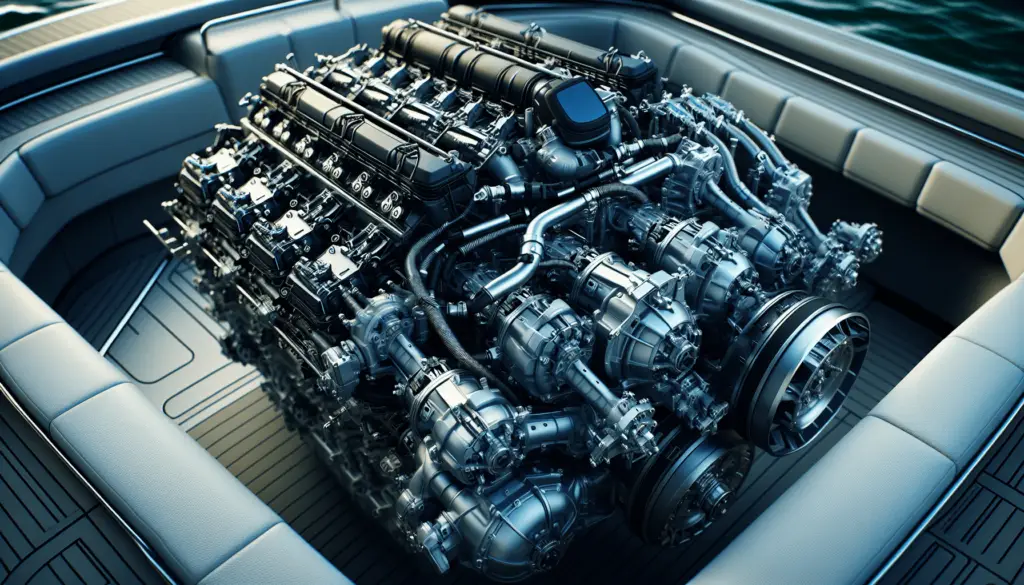
Disadvantages of Low-Emission Boat Engines
Every coin has two sides, and low-emission boat engines are no exception. The downsides often boil down to initial costs, potential reductions in performance, and limited availability of alternative fuels.
Initial Cost
Let’s face it — low-emission boat engines, especially hybrids and electric ones, can be pricier upfront than conventional engines. But remember, this initial investment often translates to long-term savings.
Potential Reduction in Performance
While low-emission engines continue to improve, some might still lag behind conventional engines in terms of power and performance. Do the groundwork and ensure the engine you choose meets your performance expectations.
Limited Availability of Alternative Fuels
Engines that run on bio-diesel or natural gas can face another obstacle: the limited availability of their fuels, especially in remote or less developed areas. Also, owners of electric boats will need access to charging infrastructure.
Potential Tax Credits and Incentives
The silver lining is that there are several incentives and tax benefits available that can offset the high upfront costs of low-emission boat engines.
Federal Tax Credits
In many countries, federal rebates or tax credits are provided for buying environmentally friendly watercraft. These can substantially reduce the net cost for you.
State and Local Incentives
Depending upon where you live, you might also be eligible for state or local incentives, such as rebates, low-interest loans, or tax-free purchases.
Manufacturer and Dealer Incentives
Boat manufacturers and dealers may also offer their own incentives, like a free extended warranty or a discount on future maintenance services, to sweeten the deal.
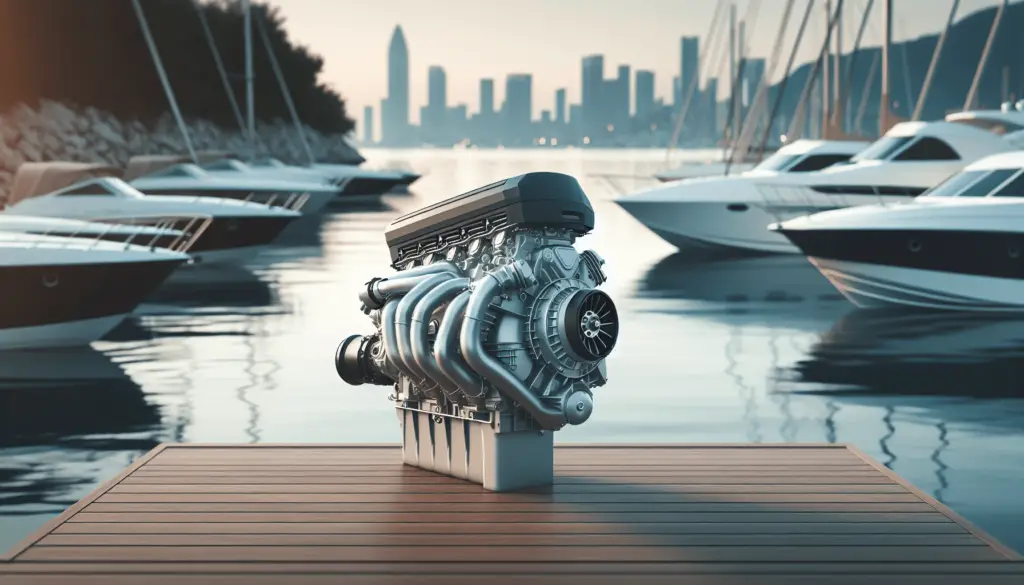
Maintenance and Operation of Low-Emission Boat Engines
Just as with any other engine, low-emission engines require regular maintenance and inspections. Optimizing the operation for fuel economy, and proactively addressing common problems and issues is vital.
Regular Maintenance and Inspections
Whether you’re running a bio-diesel, four-stroke, hybrid, or electric engine, regular maintenance checks and inspections are vital to ensure smooth running and fuel efficiency.
Optimization and Operation for Fuel Economy
Operational habits hugely impact fuel economy. For instance, avoiding aggressive accelerations and decelerations, maintaining a steady speed, and proactively managing battery charge in an electric or hybrid boat can make a marked difference to both fuel economy and emissions.
Addressing Common Problems and Issues
Each engine type comes with its own set of common problems and issues. As an owner, familiarize yourself with these and proactively address any that arise to ensure your engine runs smoothly and efficiently.
Top Rated Low-Emission Boat Engines
The market for low-emission boat engines is growing, and competitive models are available for different types of boats. Researching customer reviews and professional reviews can help identify the best engine for your boating needs.
Competitive Models in the Low-Emission Category
Several brands both big and established others small but innovative, offer a variety of models that compete on fuel efficiency, noise reduction, power, reliability, and other factors.
Customer Reviews and Professional Reviews
In this age of the internet, customer reviews and professional critiques are a gold mine for potential buyers. By reviewing these, you can get insights into any engine’s performance, reliability, and customer satisfaction.
Recommendations for Different Types and Sizes of Boats
The ideal engine depends largely on your specific boat type and size. What works excellently on a small fishing boat might be ill-suited to a large cruising yacht. So, carefully consider your boat specifics before picking an engine.
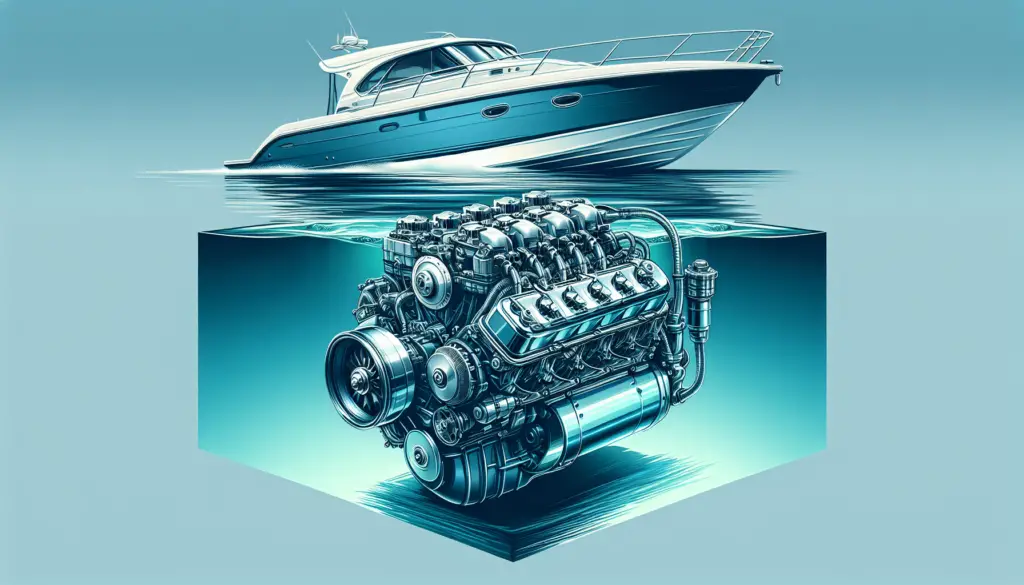
Impacts of Low-Emission Engines on the Boating Industry
Low-emission boat engines are making an impact on the marine industry, influencing both sales trends and the industry’s future direction. They also carry certain implications for boat owners and enthusiasts.
Sales Trends
The rising environmental awareness and stricter emission regulations have led to increased sales of low-emission boat engines. Manufacturers that offer such engine options are finding their market shares growing.
Industry Shifts and Direction
These shifts in consumer preferences are pushing the boat industry towards a greener future. There is an increasingly noticeable drive to develop and improve low-emission technologies in marine engines.
Implications for Boat Owners and Enthusiasts
For boat owners and enthusiasts, the shift towards low-emission engines means an adjustment. From learning new operational techniques to dealing with different maintenance drills, a change is afoot. But the benefits – both environmental and economical – should make it a welcome change.
Environmental Impact and Future Perspectives
The deployment of low-emission boat engines is leading to a significant reduction in the carbon footprint of the boating industry. This shift, along with ongoing innovations and developments, holds promise for the future.
Reduction of Carbon Footprint
Being more fuel-efficient and releasing less harmful emissions, low-emission boat engines play a crucial role in reducing the boating industry’s carbon footprint. This has positive implications for climate change and air quality.
Recent Innovations and Developments
From making two-stroke and four-stroke engines cleaner to developing more efficient hybrid and electric engines, recent innovations continue to push the envelope in the low-emission space. The rise of alternative fuels also marks a significant advancement.
Potential Technological Advances and Forecast for the Future
Looking ahead, emerging technologies hold promising potential for further reducing boat engine emissions. Developments in battery technology, fuel cells, and hydrogeneration are just a few of the exciting avenues being explored. As these technologies mature and become more mainstream, we can look forward to even cleaner, greener boating.

